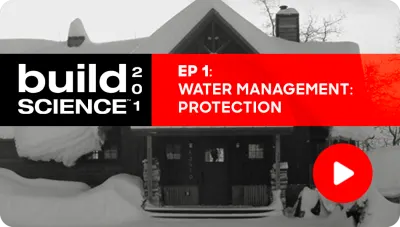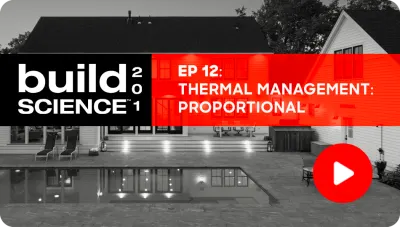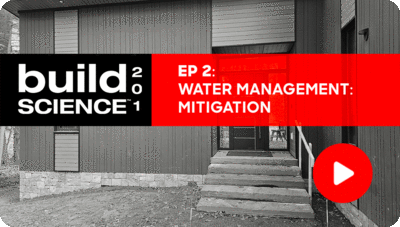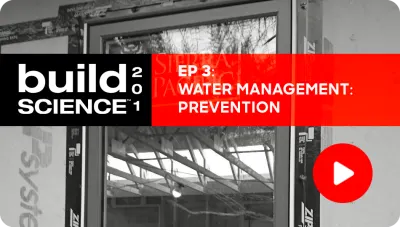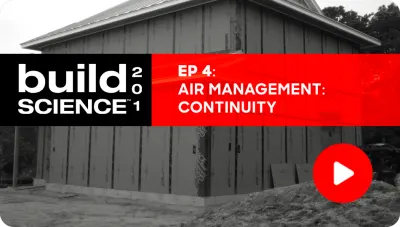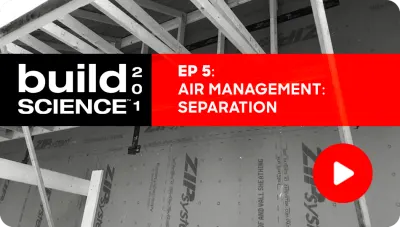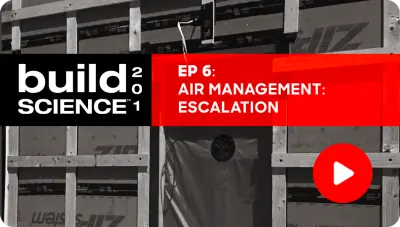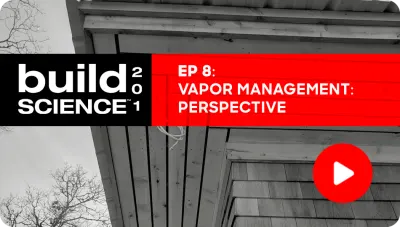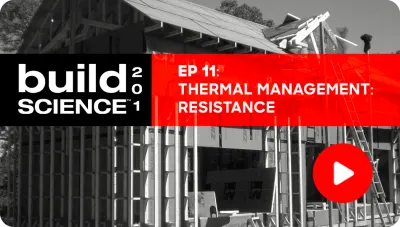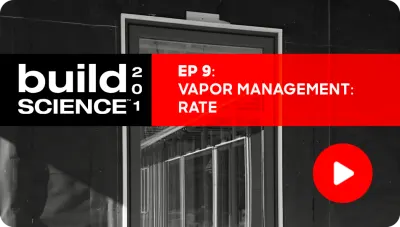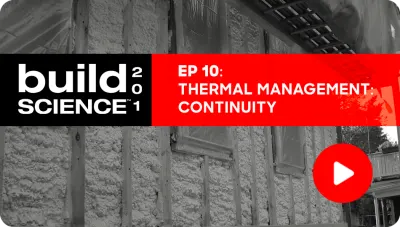Build Science™ 201
Ep. 7 - Vapor Management: Uniform Load
Next up in Build Science™ 201: Vapor Management. Matt and Steve start the conversation around vapor management strategies must adapt to different climates. Both Matt and Steve share anecdotes highlighting the unique challenges humidity presents in areas like Texas compared to drier climates. They introduce the concept of vapor barriers, likening them to Ziploc bags, and emphasize the vital role of moisture management in preventing mold growth and structural damage.
Matt and Steve delve into the differences between vapor barriers and vapor retarders, illustrating how improper use of barriers can lead to moisture trapping, particularly in humid environments. The conversation also explores various construction techniques and materials, including permeable membranes and ventilation systems, that facilitate effective moisture management.
Ultimately, this discussion underscores the necessity of understanding building science principles to design and implement effective moisture control solutions, ensuring the longevity and resilience of buildings in varying climatic conditions. By focusing on vapor control strategies tailored to specific environments, builders can enhance the performance and durability of their structures while safeguarding against common moisture-related challenges.
Continue to the next episode in the Vapor Management section: Perspective.
Episodes
Ep. 6 - Air Management: Escalation
Episode 6
Matt and Steve emphasize effective air sealing to prevent moisture issues, highlighting techniques like fluid-applied sealants, meticulous penetrations, and blower door tests. They advocate for continuous improvement and training for airtight, efficient homes.
Ep. 11 - Thermal Management: Resistance
Episode 11
Matt and Steve highlight insulation's role in heat resistance, discussing R-values, U-factors, thermal bridging, and continuous insulation. They also emphasize climate-specific techniques, shading devices, and window specifications for energy efficiency.
Ep. 12 - Thermal Management: Proportional
Episode 12
Build Science™ 201 emphasizes proportional thermal control, highlighting balanced insulation for sub-slabs, walls, and windows. Builders should prioritize water/air control layers, exceed minimum attic insulation, and enhance energy efficiency. Build Science™ 201 emphasizes proportional thermal control, highlighting balanced insulation for sub-slabs, walls, and windows. Builders should prioritize water/air control layers, exceed minimum attic insulation, and enhance energy efficiency.

 Share on facebook
Share on facebook Tweet
Tweet Email
Email Share on Linkedin
Share on Linkedin
